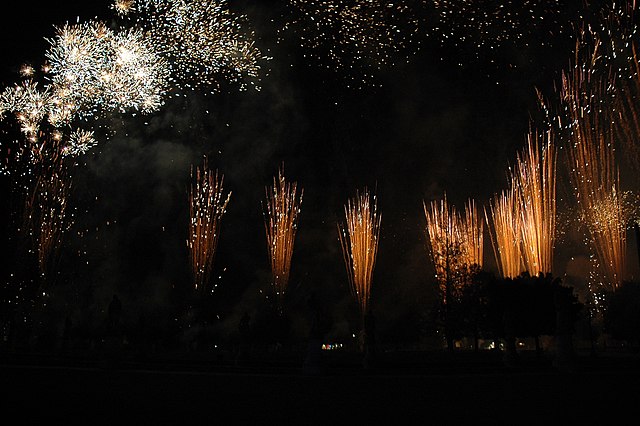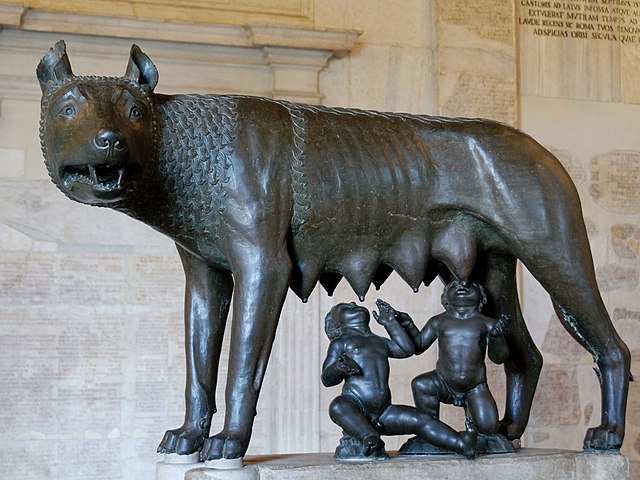Top Qs
Timeline
Chat
Perspective
Public holidays in Italy
From Wikipedia, the free encyclopedia
Remove ads
Public holidays in Italy are established by the Italian parliament and, with the exception of city or community patronal days, apply nationwide.[2] These include a mix of national, religious and local observances. As for Whit Monday, there is an exception for South Tyrol. In Italy, there are also State commemoration days, which are not public holidays.

Remove ads
Overview
Summarize
Perspective

Italy's National Day, the Festa della Repubblica (Republic Day),[1] is celebrated on 2 June each year, with the main celebration taking place in Rome, and commemorates the birth of the Italian Republic in 1946.[3] The ceremony of the event organized in Rome includes the deposition of a laurel wreath as a tribute to the Italian Unknown Soldier at the Altare della Patria by the President of the Italian Republic and a military parade along Via dei Fori Imperiali in Rome.

Liberation Day is a national holiday in Italy that takes place on 25 April commemorating the victory of the Italian resistance movement against Nazi Germany and the Italian Social Republic, puppet state of the Nazis and rump state of the fascists, in the Italian Civil War, a civil war in Italy fought during World War II. The date was chosen by convention, as it was the day of the year in 1945 when the National Liberation Committee of Upper Italy (CLNAI) officially proclaimed the insurgency in a radio announcement, propounding the seizure of power by the CLNAI and proclaiming the death sentence for all fascist leaders (including Benito Mussolini, who was shot three days later).[4]
17 March was proclaimed a national holiday in 1911, the 50th Anniversary of the Unification of Italy, in 1961, the 100th anniversary of the Unification of Italy, and in 2011, the 150th anniversary of the Unification of Italy. The law no. 222 of 23 November 2012[5] the Giornata dell'Unità nazionale, della Costituzione, dell'inno e della bandiera ("Day of National Unity, the Constitution, the anthem and the flag") was established to be celebrated on 17 March of each year, on the day of the proclamation of the Unification of Italy in 1861, however it is not to be considered a festive day.
Until 1977 the following were also considered public holidays in Italy for civil purposes:[6]
- 19 March, Saint Joseph Day;
- 40 days after Easter, Ascension of Jesus;
- 60 days after Easter, Corpus Christi;
- 29 June, Saints Peter and Paul, patron saints of Rome (it remained a public holiday only in the municipality of Rome);
- 4 November, National Unity and Armed Forces Day.
These public holidays were suppressed, during the austerity caused by the 1973 oil crisis, on the basis of the law n. 54 of 5 March 1977.[6] In particular, in 1977 National Unity and Armed Forces Day became a moveable feast, and celebrations occurred every first Sunday of November.[7] National Unity and Armed Forces Day is an Italian national day since 1919 which commemorates the victory in World War I, a war event considered the completion of the process of unification of Italy. It is celebrated every 4 November, which is the anniversary of the armistice of Villa Giusti becoming effective in 1918 declaring Austria-Hungary's surrender.[7] Italy entered World War I in 1915 with the aim of completing national unity and for this reason, the Italian intervention in World War I is also considered the Fourth Italian War of Independence,[8] in a historiographical perspective that identifies in the latter the conclusion of the unification of Italy, whose military actions began during the revolutions of 1848 with the First Italian War of Independence.[9][10]
Francis of Assisi (left) and Catherine of Siena (right), Italian national patron saints. The Feast of Saints Francis and Catherine is dedicated to them.
In addition to the 12 national holidays, each city or town celebrates a public holiday on the occasion of the festival of the local patron saint. For example, Rome on 29 June (Saints Peter and Paul), Milan on 7 December (Saint Ambrose), Naples on 19 September (Saint Januarius), Venice on 25 April (Saint Mark the Evangelist) and Florence on 24 June (Saint John the Baptist).[2] In South Tyrol, the holiday is instead on Whit Monday. This makes the total public holidays in Italy 13.

Natale di Roma, historically known as Dies Romana and also referred to as Romaia, is the festival linked to the foundation of Rome, celebrated on 21 April.[11] According to legend, Romulus is said to have founded the city of Rome on 21 April, 753 BC. From this date, the Roman chronology derived its system, known by the Latin phrase Ab Urbe condita, meaning "from the founding of the City", which counted the years from this presumed foundation.
The Italian national patronal day, on 4 October, celebrates Saints Francis and Catherine. Notable patronal festivals in Italy are the Festival of Saint Agatha in Catania, the Feast of Saints Peter and Paul in Rome, the Feast of San Gennaro in Naples and Little Italy, New York[12] and the Feast of Our Lady of the Hens in Pagani.
This number does not correspond to the number of days off work as public holidays falling on weekends are not transferred. When a holiday falls on a Tuesday or a Thursday, it is common practice to make a ponte (pl. ponti. English: "bridge") in order to have a long weekend. Schools are usually closed.
Christmas in Italy (in Italian: Natale) begins on 8 December, with the feast of the Immaculate Conception, the day on which traditionally the Christmas tree is mounted and ends on 6 January, of the following year with the Epiphany (in Italian: Epifania).[13] The term "Natale" derives from the Latin natalis, which literally means "birth".[14] Easter in Italy (Italian: Pasqua) is one of that country's major holidays.[15] Easter in Italy enters Holy Week with Palm Sunday, Maundy Thursday, Good Friday and Holy Saturday, concluding with Easter Day and Easter Monday. Each day has a special significance.
During the Italian public holidays, peaks of tourist flows in Italy are recorded, particularly in winter due to the Christmas and New Year's Day holidays,[16] in spring, due to the Easter holidays,[17] and in summer, due to the favourable climate.[18] For internal tourism, peaks of tourist flows are also recorded on the occasion of the three national civil holidays, Liberation Day (25 April), International Workers' Day (1 May) and the Festa della Repubblica (2 June),[19][20] as well as for three religious holidays, the Ferragosto (15 August),[21] All Saints' Day (1 November)[22] and the Feast of the Immaculate Conception (8 December), especially in the presence of ponti.[23]
Remove ads
Current holidays
Summarize
Perspective




Current holidays in Italy are:[25]
Remove ads
State commemorations
Summarize
Perspective
The following days are not public holidays, but are nevertheless official State commemorations.[1][25]
Civil solemnities


Celebratory days




Remove ads
See also
Notes
- So automatically Easter is a civil holiday due to the fact that it is always on Sunday.
- The date depends on the saint's feast day, which is established by the calendar of saints. The date of the feast can be moved at the discretion of the comune.
References
Wikiwand - on
Seamless Wikipedia browsing. On steroids.
Remove ads


